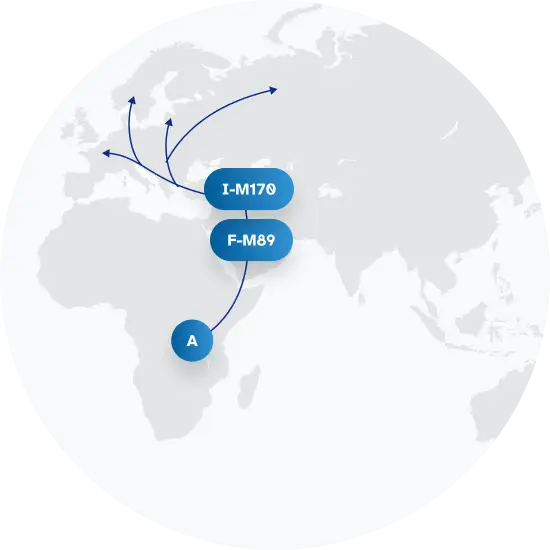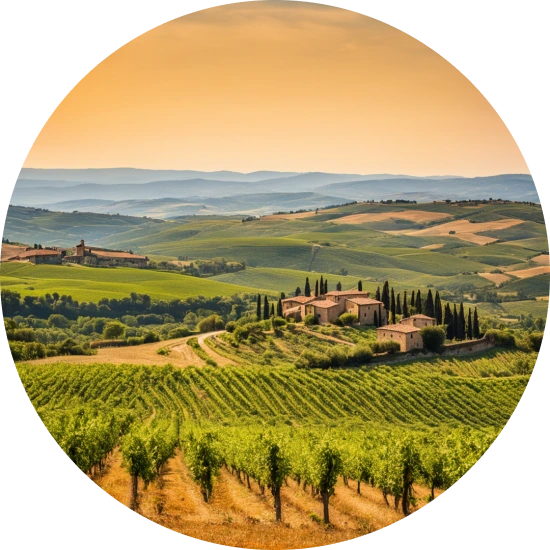Explore the Family Name Westmoreland
How common is the last name Westmoreland in the United States?
Based on the data from the Decennial U.S. Census, the surname Westmoreland saw a slight decrease in popularity between 2000 and 2010. In 2000, it was ranked as the 3258th most popular surname but fell to the 3430th position by 2010, representing a drop of 5.28 percent. However, the actual count of people with the Westmoreland surname increased from 10,066 in 2000 to 10,399 in 2010, reflecting a rise of 3.31 percent. Nevertheless, the proportion per 100,000 people decreased by 5.36 percent over this decade.
| 2000 | 2010 | Change | |
|---|---|---|---|
| Rank | #3,258 | #3,430 | -5.28% |
| Count | 10,066 | 10,399 | 3.31% |
| Proportion per 100k | 3.73 | 3.53 | -5.36% |
Race and Ethnicity of people with the last name Westmoreland
On the subject of ethnic identity, the Decennial U.S. Census data reveals that the Westmoreland surname is predominantly associated with individuals identifying as White, though there has been a slight decrease in this group, from 79.18 percent in 2000 to 77.00 percent in 2010. Additionally, there's been an increase in the number of Westmorelands identifying as Hispanic (1.27 percent to 1.87 percent), Black (17.26 percent to 18.45 percent), Asian/Pacific Islander (0.27 percent to 0.33 percent) and American Indian and Alaskan Native (0.47 percent to 0.61 percent). The representation of those identifying as having two or more races also saw an uptick from 1.56 percent in 2000 to 1.75 percent in 2010. These shifts underscore the evolving diversity within the population carrying the Westmoreland surname.
| 2000 | 2010 | Change | |
|---|---|---|---|
| White | 79.18% | 77% | -2.75% |
| Black | 17.26% | 18.45% | 6.89% |
| Hispanic | 1.27% | 1.87% | 47.24% |
| Two or More Races | 1.56% | 1.75% | 12.18% |
| American Indian and Alaskan Native | 0.47% | 0.61% | 29.79% |
| Asian/Pacific Islander | 0.27% | 0.33% | 22.22% |
Westmoreland ancestry composition
23andMe computes an ancestry breakdown for each customer. People may have ancestry from just one population or they may have ancestry from several populations. The most commonly-observed ancestry found in people with the surname Westmoreland is British & Irish, which comprises 61.1% of all ancestry found in people with the surname. The next two most common ancestries are French & German (19.7%) and Nigerian (3.1%). Additional ancestries include Scandinavian, Eastern European, Ghanaian, Liberian & Sierra Leonean, Spanish & Portuguese, and Angolan & Congolese.
Ready to learn more about your ancestry? Get the most comprehensive ancestry breakdown on the market by taking our DNA test. Shop 23andMe
| ANCESTRY BREAKDOWN | COMPOSITION |
|---|---|
| British & Irish | 61.1% |
| French & German | 19.7% |
| Nigerian | 3.1% |
| Other | 16.1% |

Possible origins of the surname Westmoreland
Your DNA provides clues about where your recent ancestors may have lived. Having many distant relatives in the same location suggests that you may all share common ancestry there. Locations with many distant relatives can also be places where people have migrated recently, such as large cities. If a large number of individuals who share your surname have distant relatives in a specific area, it could indicate a connection between your surname and that location, stemming from either recent ancestral ties or migration.
Based on 23andMe data, people with last name Westmoreland have recent ancestry locations in the United Kingdom of Great Britain and Northern Ireland and Ireland.
| RECENT ANCESTRY Location | Percentage |
|---|---|
| Greater Manchester, United Kingdom | 89.40% |
| West Midlands, United Kingdom | 89.40% |
| Greater London, United Kingdom | 89.40% |
| Glasgow City, United Kingdom | 89.00% |
| Merseyside, United Kingdom | 88.60% |
What Westmoreland haplogroups can tell you
Haplogroups are genetic population groups that share a common ancestor on either your paternal or maternal line. These paternal and maternal haplogroups shed light on your genetic ancestry and help tell the story of your family.
The top paternal haplogroup of people with the surname Westmoreland is I-P109, which is predominantly found among people with European ancestry. Haplogroup I-P109 is descended from haplogroup I-M170. Other common haplogroups include R-CTS241 and I-CTS4922, which are predominantly found among people with European and European ancestry. Other surnames with similar common haplogroups are: Niles, Rushing, Hamby, Gentry, Hough, Foust, Copley, Dyson, Lemaster, Simonds.
The most common maternal haplogroups of people with Westmoreland surname are: H1, T2b, H. These most commonly trace back to individuals of European ancestry.
 Paternal Haplogroup Origins I-M170
Paternal Haplogroup Origins I-M170
Your paternal lineage may be linked to many northern European men
If you have haplogroup I1a1b, your paternal line stems from a young branch of I-M253 called I-L22, which likely arose in the last 3,000 years. I-L22 is most common in Northern Europe, but a recent study found that this haplogroup was present in a significant portion of the Partecipanza population living in San Giovanni in Persiceto, Italy. The area of San Giovanni in Persiceto was involved in a migration period in 728 AD, when it became part of the Lombard kingdom, under King Aistulf. San Giovanni in Persiceto was only under Lombard rule for 48 years, after which the Lombards were defeated by King Charlemagne in 776 AD. There are several characteristics of San Giovanni in Persiceto that link it to other Lombard settlements. For instance, some research suggests San Giovanni in Persiceto was the seat of a Lombard Duke between 750 and 800 AD. It is possible that the Lombards who ruled over San Giovanni in Persiceto played an important role in the introduction and growth of haplogroup I-L22 in the region.
Your maternal lineage may be linked to the nomadic Tuareg of the Sahara
Though haplogroup H1 rarely reaches high frequencies beyond western Europe, over 60% of eastern Tuareg in Libya belong to haplogroup H1. The Tuareg call themselves the Imazghan, meaning “free people.” They are an isolated, semi-nomadic people who inhabit the West-Central Sahara and are known today for a distinctive dark blue turban worn by the men, and for their long history as gatekeepers of the desert.How did women carrying H1 make it all the way from western Europe to this isolated community? They likely migrated from Spain across the Strait of Gibraltar into Morocco after the Last Ice Age, where they were assimilated into the Berbers of the Mediterranean coast. Then, about 5,000 years ago, the Sahara shifted from a period of relative habitable conditions to its dramatically arid desert environment. This shift may have caused migrations throughout the Sahara, prompting the ancient Tuaregs to meet and mingle with the Berbers, bringing H1 lineages into their population.

What do people with the surname Westmoreland have in common?
Spoiler alert: it's complicated. People with the same last name are usually no more genetically similar than a randomly sampled group of people from the same population. That said, people with the same surname are more likely to have similar ancestries than randomly sampled individuals. The reason is the tendency of people with similar cultural or geographical backgrounds to preferentially mate with one another. That's why people who share a surname may be more likely to share traits and tendencies in common than people within the general population. Check out the percentages below to see the prevalences of tastes, habits, and traits of people with your surname compared with prevalences among 23andMe users.
Preferences
Traits
Habits
Wellness
Are health conditions linked to the last name Westmoreland?
The short answer is that, if there is an association between surname and health, it's usually more about your ancestry than your name. Individuals with a given surname are no more genetically similar than the general population but often have similar ancestries. The populations of people associated with those shared ancestries often have sets of genetic variations, also known as alleles, in common. Some of those alleles are associated with a greater likelihood of developing certain diseases.
Disease variant frequency by ancestry
Disease allele frequencies in populations associated with the surname Westmoreland are shown below. Important Note: not everyone with a disease allele will develop these health condition






















